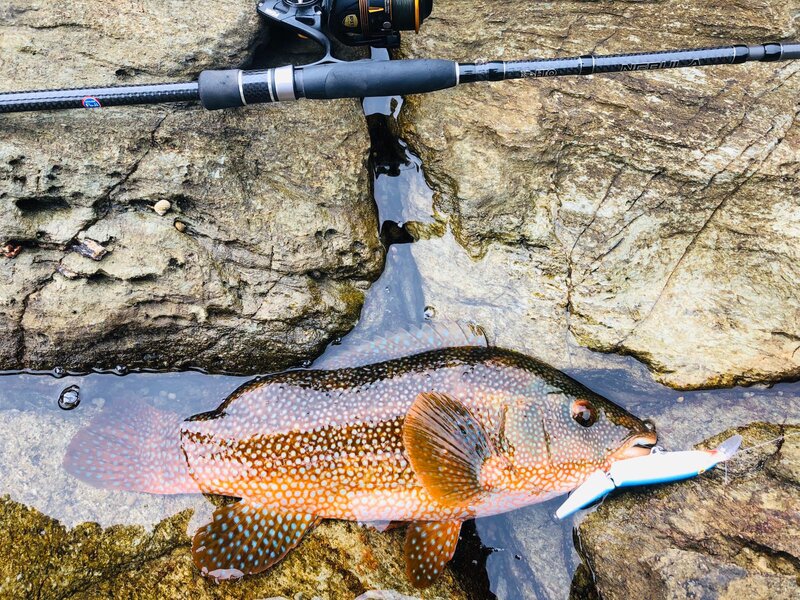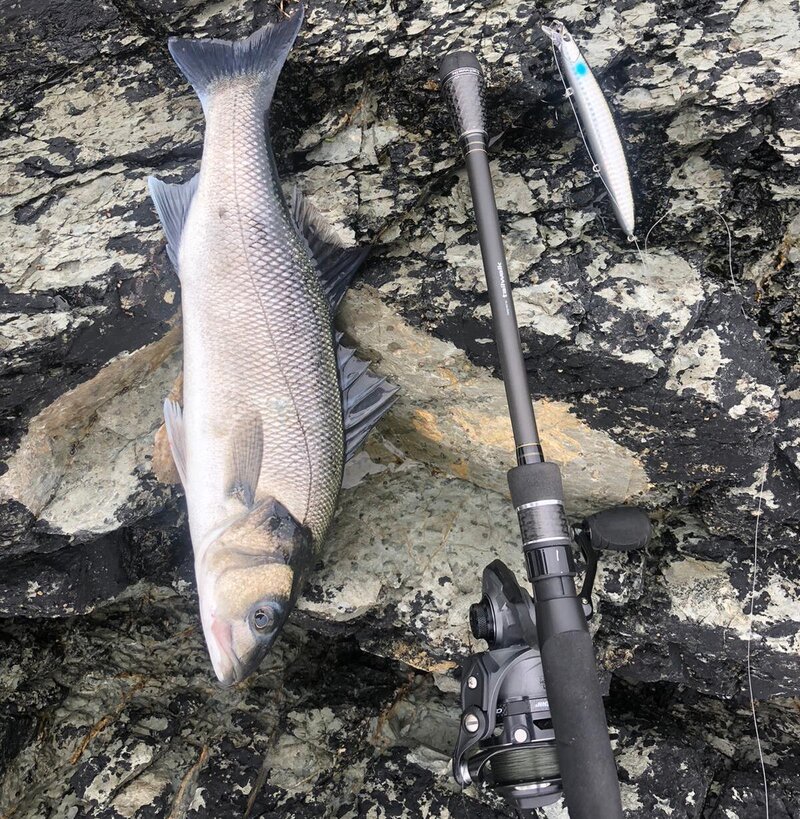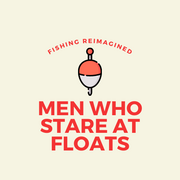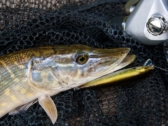Whilst lure fishing may not have the purity of fly fishing or the patience and serenity of float fishing, lure fishing is our favourite form of fishing. The simplicity of the setup, the amount of ground you cover and the type of fish you target make for heart-racing beautiful fishing. Providing you pick the right location.
As these artificial baits are designed to tempt predators and aggressive fish into striking – as food or as a territorial homage – the takes can be ultra-aggressive and line can be stripped from the reel. That’s what makes lure fishing so special. The anticipation or the take is as exciting as the take itself. Well almost.
Lure Fishing for Bass in the UK
What is lure fishing?
Lure fishing is a type of angling where you target fish with artificial baits – or lures – primarily designed to target predatory species of fish. Usually, you utilise lures that either mimic the target species’ prey or – if the fish is territorial like pike or wrasse – are designed to threaten them.

What do I need to start lure fishing?
To start lure fishing you only really need a rod, reel, scissors, line, lure clips and lures. That’s part of lure fishing’s appeal. No wheelbarrows full of equipment to carry with you because you need to cover the ground. Be that in saltwater or freshwater lure fishing.
Depending on the type of fish you’re going after you should also consider a landing mat, a landing net, forceps or pliers and leader material. If you’re targeting larger fish or pike (pike are notoriously fragile) you need forceps or pliers to safely remove hooks and landing gear to care for the fish.
Pike Lure Fishing For Beginners
Lure fishing rods are typically hardier than traditional coarse or float fishing rods because they attract more aggressive strikes from powerful predators. Particularly if you’re fishing for lures in saltwater.
Typically you want to look for supple, fast-action rods with a casting weight best suited to the weight of lure you’re using. A good starting point is usually a two-piece rod with a 7 – 28g casting weight. Targeting bigger fish generally requires bigger lures and a sturdier rod.
If you’re targeting powerful predators, you should utilise a minimum 2500 – 4000 size reel with strong enough gears to handle predatory fish and enough line capacity for the job in hand. If you’re saltwater lure fishing 120m line capacity is the absolute minimum we’d recommend. Particularly on one of these saltwater spinning reels. Freshwater doesn’t quite have the same rigours, so if you’re only buying one go for a saltwater-specific one.
Braided line is the preferred choice for lure fishing, primarily because it’s less visible and less stretchy than mono. The lack of stretch creates greater sensitivity and allows you to have more control over your lures.
The strength of line is also of paramount importance and completely depends on the size and type of fish you’re targeting and the conditions. If you’re fishing for perch in snag-free, smaller rivers, then 5lb line would be ample. And exciting. If you’re fishing for large bass in choppy seas, you will want to up it significantly to something like 29lb+.
Whilst it depends on the type of fishing you’re doing, the leader can be essential when lure fishing. If you’re targeting powerful predators with sharp teeth, or fish that drag you down into the roots and snags around them, you need an abrasive-resistant leader to prevent your line snapping.
Fluorocarbon leader is our preferred choice thanks to its excellent abrasion resistance and lack of reflection in brighter conditions. If you’re fishing with 29lb line, using a slightly weaker leader (25 or 27lb) means that if you snag it’s unlikely the entire rig will snap off. Although this is works best with a swivel.
And you need an array of lures and a lure box and a lure fishing bag to start with. Depending on what you’re targeting, lures that float, sink, hard metals and soft plastics are all salient choices.
If you’re fishing the briny depths, check out this post on sea fishing with lures in the UK.
How do I fish with lures?
To fish with lures you need to have a target species, a fishing mark and all of the above tackle that suit the conditions effectively. Then you need a strategy which includes an understanding of the fish you’re targeting, the lure fishing technique you’re going to use and the ground you’re going to cover.
As an example, pike tend to reside in pools of slack water near fast-flowing water. The heavily oxygenated water creates excellent conditions for bait fish, but the pike like to conserve energy in the slower water. They are territorial and can be found in the same place for years.
Whereas saltwater predators like bass hunt in rough, fast-flowing conditions and use a huge amount of energy just existing in the swell and tidal flow.
Once you have a location and a basic understanding of watercraft (where the fish is most likely to be and what lure should I try) you can set up your lure fishing rig.
As a beginner, I’d recommend tying your braid to your lure clip with a uni-knot. My favourite knot thanks to it simplicity. If you’re using a leader and don’t feel comfortable tying two lines together, then a swivel is a great place to start. Your rig would flow as such: braid (main line) – swivel – leader – lure clip – lure.
When is the best time to go lure fishing?
Dawn is a personal favourite when it comes to the best time to go lure fishing. But dusk and nighttime can be equally effective. This completely depends on what fish you are targeting, what season it is, where you’re fishing and what the conditions are. As a general rule, you’re more likely to catch fish with lures in overcast, cooler conditions.
You stand your best chance lure fishing by understanding the fish and the conditions you’re fishing in. Presenting the lure as naturally as possible is key. Hence lower light or overcast conditions are your friends. Fish like bass and chub can spook easily when they see your shadow.
What lure-fishing techniques are there?
There are many different types of lure fishing techniques out there for you to try, including:
- Cast and retrieve: Arguably the type of fishing everyone thinks of when you hear ‘lure fishing’ cast and retrieve involves casting the lure to the target, letting it sink to the desired level, and then reeling in.
- Jigging: Vertical lure fishing – primarily done in saltwater – where the lure is pumped up and down. It’s generally used to target fish at deeper depths.
- Trolling: Typically used in sea fishing or at least in larger bodies of water, trolling is when lures are left to drag behind the back of your boat designed to target larger predators.
- Bottom bouncing: Bottom bouncing with lures is done from a boat and is a more methodic method of trolling. Bouncing the lures off the bottom in a rhythmic motion that stirs up the bottom and causes a little commotion
- Topwater lure fishing: Best used when the target species are at their most hostile, topwater lure fishing – unsurprisingly – uses surface lures to encourage aggressive strikes.
- Surface popper fishing: Poppers are surface lures that have an unusual, jerky action designed to look like an injured fish. Poppers are perfect for targeting fish like bass when they’re feeding over shallow, snaggy ground (kelp beds, rocky structures etc).
- Sinking lure fishing: The complete opposite to surface popper fishing, sinking lures let you target fish in the deep, dark depths. Perfect for fish like pollock or when conditions are too calm and clear for surface fishing
How do I set up a lure on a fishing line?
Your lure fishing setup does depend on the fish you’re targeting and the conditions you’re fishing in. For example, a small, snag-free river can be fished with just a lure attached to the mainline (preferably on a lure clip for easy lure changes) and a lightweight braid.
Whereas fishing for larger, more powerful predators in choppy waters would require an entirely different setup. Something like the below – minimum 20lb braid, 20lb fluorocarbon leader, lure clip and an FG knot – is what we use when lure fishing for bass.

Pike and bass (in fact most saltwater fishing) require a leader attached to the main line to prevent teeth or snags from breaking the mainline. Fluorocarbon leaders are anti-abrasive and prevent unwanted snaps.
What fish can I catch on lures?
You can catch almost any fish on lures. Even fish are supposed to be non-predatory and primarily herbivorous species. But primarily lures target predatory fish.
In the UK the most popular species to target on lures are:
- Pike
- Perch
- Bass
- Pollock
- Wrasse
But fish like chub, zander, mackerel, salmon and trout can be caught on lures, such is their versatility.
Coarse Fishing Season in the UK: What You Need to Know in 2023
Are lures better than bait?
Lures are not necessarily better or worse than bait, they are a completely different style of fishing that can be far more or less profitable depending on the time of year, conditions and species.
Lure fishing lets you cover a huge amount of ground, targeting more aggressive predators on the surface with poppers or at depths with sinking lures. It’s arguably the most enjoyable method of fishing when it comes to covering ground and – unlike bait fishing – you’re acting as a hunter. You’re trying to seek out the fish.
If conditions are murky and visibility is poor, then brightly coloured lures offer you some respite, but fishing with stinky bait removes visibility from the equation. And fish are always hungry. Whereas conditions play a much great role in lure fishing than when fishing with bait.
FAQs
Do lures catch big fish?
Yes, lures catch big fish. You do have an element of control regarding the size of fish you’re targeting with lure fishing. The larger the lure, the bigger the fish. At least theoretically.
The very biggest fish are unlikely to be caught on lures and are primarily caught using live bait or huge dead baits.. However, in the UK 20lb+ pike are not uncommon on lures as are double-digit bass.
Do I need a swivel when using lures?
You don’t need a swivel when using lures. A swivel is primarily used as an in-between link for line(s) to leader material and weights. It can be very useful for beginners when lure fishing – as you don’t need to tie line to line – or for setting up weighted rigs. If you don’t want to use swivels or don’t have any, then you just need to learn how to tie the line to the leader.
Do I use a bobber with a lure?
No, you don’t need a bobber with a lure. Bobbers are primarily used for fishing with live bait in rougher waters, allowing you to suspend your weight below the surface or just above the bottom.
But lure fishing requires an action. Casting and retrieving, jigging, bottom bouncing et al. You don’t need a bobber to lure fish.
Do I need a sinker when fishing with a lure?
You don’t need a sinker when fishing with a lure, but there are circumstances where sinkers can be useful. If you’re bottom bouncing, jigging or attempting to fish below the surface, adding weight to your lure can help you target fish that you currently can’t reach. So having a sinker with you when lure fishing is sensible.
How fast should I reel in a lure?
How fast you should reel in a lure depends on the fish you are targeting and the surrounding conditions. In low light, overcast conditions (with rougher waters if you’re saltwater fishing) reeling in more aggressively makes sense.
As a more general rule when conditions are either too cold or too hot fish are more lethargic and less likely to strike. So slowing your retrieval speed in these conditions is sensible. And if a specific retrieval speed or method isn’t working, vary it.
Tags: Lure Fishing
Harry
Hi, I'm Harry. A keen, albeit exceedingly average fisherman. I've spent the last few years trawling London's waterways with - if I'm being kind - varied success and would love to help you avoid the mistakes I have made.







